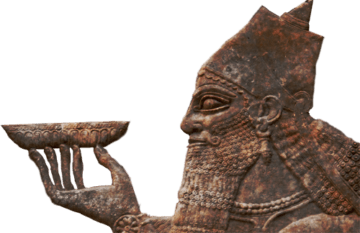by Thomas O’Dwyer
Here with a loaf of bread beneath the bough,
A flask of wine, a book of verse—and Thou
Beside me singing in the wilderness—
And Wilderness is Paradise enow. [Rubaiyat of Omar Khayyam]
On second thoughts, Omar, forget the loaf and thou. Just leave the flask.

“You can trust me with your life, My King.”
“But not with my wine, obviously. Give it back.”
[The King of Attolia, by Megan Whalen Turner]
The 17th century English philosopher Francis Bacon wrote: “Of all things known to mortals, wine is the most powerful and effectual for exciting and inflaming the passions of mankind, being common fuel to them all.” Emerging statistics from the recent pandemic suggest plenty of exciting and inflaming has been going on around the globe. Times of trouble now play out to a background of popping corks, as do times of celebration. Not that this is new, far from it. In the ninth century BC, King Ashurnasirpal of Assyria threw a mighty wine-drenched party to celebrate the foundation of his new capital city, Nimrud. In Mesopotamia and Assyria, the everyday drink was beer, a beverage whose origins lurk in the dawn of human history.
“What was most impressive and most significant was the Assyrian king’s choice of drink,” Tom Standage wrote in his bestselling A History of the World in Six Glasses. “Despite his Mesopotamian heritage, Ashurnasirpal did not give pride of place at his feast to the Mesopotamians’ usual beverage. Carved stone reliefs at the palace do not show him sipping beer through a straw; instead, he is elegantly balancing a shallow bowl, probably gold, on the tips of the fingers of his right hand so that it is level with his face. This bowl contained wine.” Records of the feast in carved cuneiform tablets report the king served equal quantities of beer and wine to his thousands of guests. But it was the wine that displayed his wealth and the extent of his power — some of the wines came from remote regions of Ashurnasirpal’s empire. Wine was in fashion, but it was still mainly the drink of the elites, being too expensive and probably not to the taste of the beer-drinking masses. But wine was not new and its origins remain almost as obscure as those of beer. Read more »
